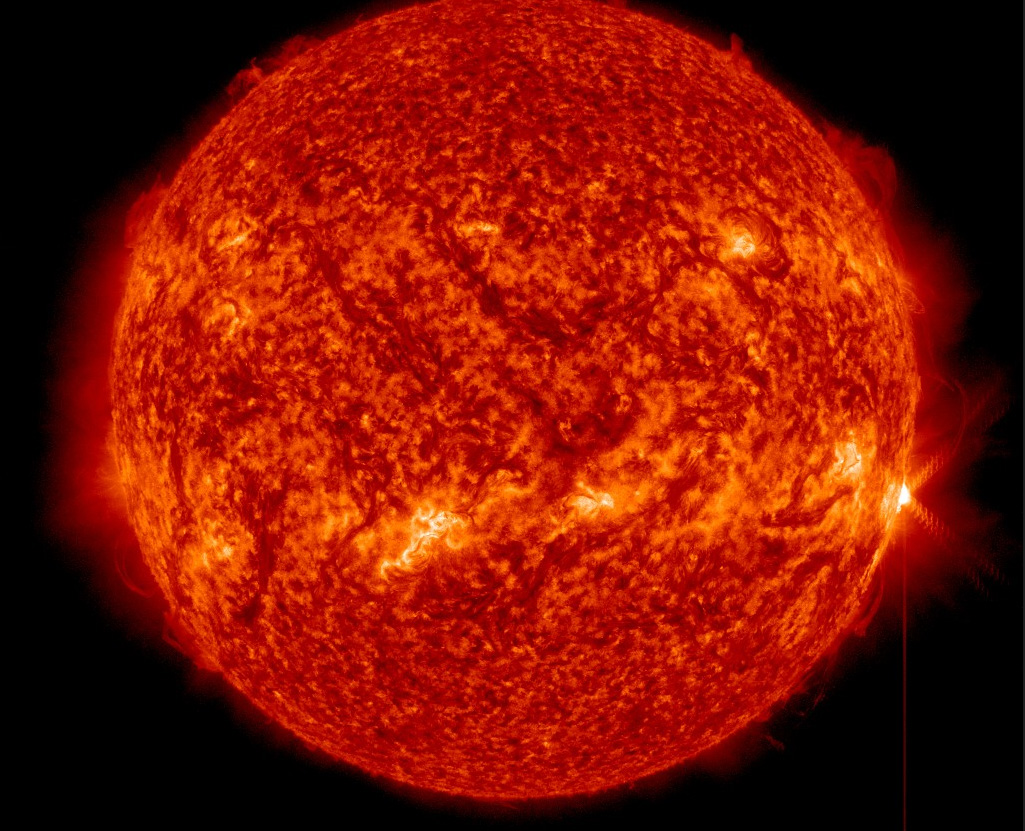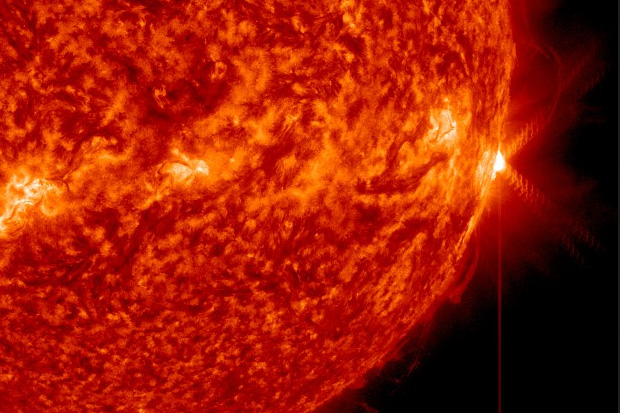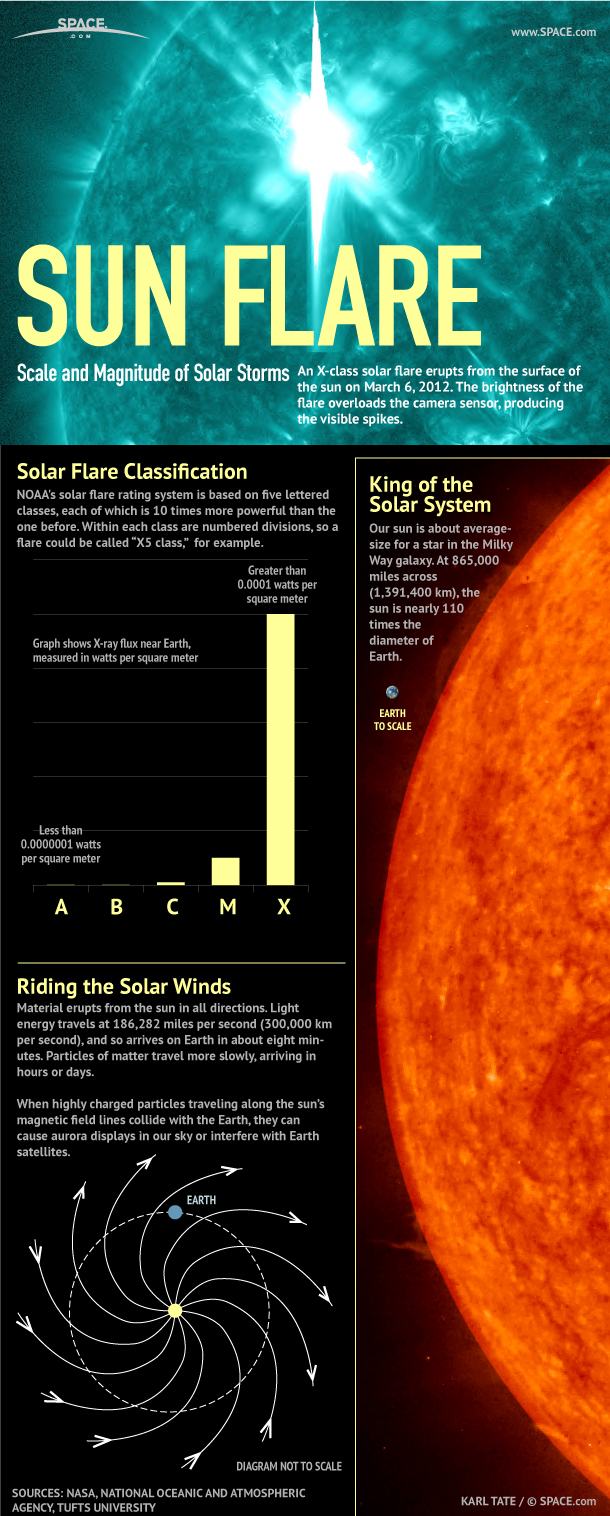Sun Unleashes Major Solar Flare (Video)

The sun erupted with a massive solar flare late Thursday (April 24), triggering a temporary communications blackout on some parts of Earth.
The powerful flare peaked at 8:27 p.m. EDT Thursday (0027 April 25 GMT), and ranked as an X1.3-class solar storm, one of the strongest types of flares the sun can experience, according to a report from the U.S. Space Weather Prediction Center. NASA's sun-watching Solar Dynamics Observatory captured video of the intense solar flare in several difference wavelengths.
The solar flare erupted from an active sunspot region known as Region 2035 located on the far western side (or limb) of the sun as seen from Earth. Because of its position, the flare sparked a high-frequency radio blackout for about an hour on the daytime side of Earth, most likely over the Pacific Ocean and Eastern Pacific Rim, according to the SWPC update. [Photos: The Biggest Solar Flares of 2014]


"Region 2035 is rotating out of view and won't pose any danger for much longer, but could in the immediate future," SWPC officials wrote in the update.
When aimed directly at Earth, X-class solar flares can endanger astronauts in space, as well as interfere with communications and navigation satellites in orbit. The most powerful X-class flares can also affect power grids and other infrastructure on the Earth.
Thursday's solar flare was the fourth X-class solar flare of 2014. It followed an X1.2 solar flare on Jan. 7, a monster X4.9 solar flare on Feb. 24, as well as an X1 solar flare on March 29.
While X-class flares are the most powerful eruptions on the sun, the star also experiences more moderate M-class solar flares (which can supercharge Earth's aurora displays) and weaker C-class storms. The sun is currently in an active phase of its 11-year weather cycle, and was expected to reach its peak activity in 2013.
Get the Space.com Newsletter
Breaking space news, the latest updates on rocket launches, skywatching events and more!
NASA and other space and weather agencies keep watch on the sun's activity using a fleet of spacecraft, including the Solar Dynamics Observatory, NASA's twin STEREO spacecraft and other probes.
Email Tariq Malik at tmalik@space.com or follow him @tariqjmalik and Google+. Follow us @Spacedotcom, Facebook and Google+. Original article on Space.com.

Join our Space Forums to keep talking space on the latest missions, night sky and more! And if you have a news tip, correction or comment, let us know at: community@space.com.

Tariq is the Editor-in-Chief of Space.com and joined the team in 2001, first as an intern and staff writer, and later as an editor. He covers human spaceflight, exploration and space science, as well as skywatching and entertainment. He became Space.com's Managing Editor in 2009 and Editor-in-Chief in 2019. Before joining Space.com, Tariq was a staff reporter for The Los Angeles Times covering education and city beats in La Habra, Fullerton and Huntington Beach. In October 2022, Tariq received the Harry Kolcum Award for excellence in space reporting from the National Space Club Florida Committee. He is also an Eagle Scout (yes, he has the Space Exploration merit badge) and went to Space Camp four times as a kid and a fifth time as an adult. He has journalism degrees from the University of Southern California and New York University. You can find Tariq at Space.com and as the co-host to the This Week In Space podcast with space historian Rod Pyle on the TWiT network. To see his latest project, you can follow Tariq on Twitter @tariqjmalik.









